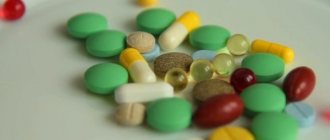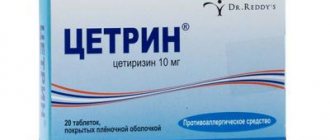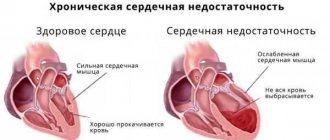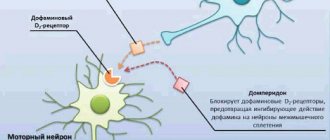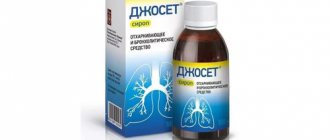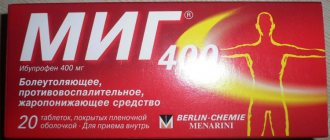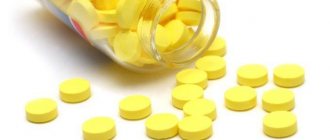Indications for use
Common to both dosage forms Prevention and treatment of ischemic neurological disorders caused by spasm of cerebral vessels against the background of subarachnoid hemorrhage due to aneurysm rupture (film-coated tablets are used after previous IV therapy with an infusion solution). For film-coated tablets ( additionally) Severe brain dysfunction in elderly patients (decreased memory and concentration, emotional instability).
Pharmacodynamics
It has a cerebrovasodilating effect, prevents or eliminates vascular spasm provoked by various vasoactive substances (including serotonin, PG and histamine), has neuro- and psychotropic activity. In patients with acute cerebrovascular accidents, by dilating cerebral vessels, it improves cerebral circulation . In this case, additional perfusion, as a rule, is more pronounced in the area of damaged and previously insufficiently perfused with blood areas of the brain. The use of nimodipine can significantly reduce the mortality rate and the incidence of ischemic neurological disorders resulting from subarachnoid hemorrhage. Nimodipine, acting on calcium channel receptors of the blood vessels of the brain, has a protective effect on nerve cells, stabilizes their function, improves blood supply to the brain, and improves ischemia tolerance nerve cells, and “steal syndrome” does not develop. It has a beneficial effect on memory and concentration disorders in patients with impaired brain function. At the same time, personal and behavioral reactions and the results of psychometric functional tests improve.
Pharmacokinetics
Suction. After oral administration, the active substance is almost completely absorbed. Nimodipine and primary metabolites are detected in the blood plasma already 10–15 minutes after taking the tablet. After repeated oral administration (30 mg 3 times a day), Cmax in elderly patients was achieved after 0.6–1.6 hours and was 7.3–43.2 ng/ml. In young patients, after taking single doses of 30 and 60 mg, Cmax is (16 ± 8) and (31 ± 12) ng/ml, respectively. The increase in Cmax and AUC is dose-dependent. Due to intensive metabolism during the “first pass” through the liver (85–95%), absolute bioavailability is 5–15%. With prolonged infusion at a rate of 0.03 mg/kg/h, the average stable the concentration of nifedipine in blood plasma is 17.6–26.6 ng/ml. After an IV bolus infusion, a biphasic decrease in the concentration of nimodipine in the blood plasma is observed after 5–10 minutes and after approximately 60 minutes. The volume of distribution is 0.9–1.6 l/kg, total clearance is 0.6–1.9 l/h/kg. Distribution. Intensively binds to blood plasma proteins (97–99%) and penetrates the placental barrier. Concentrations of nimodipine and its metabolites in breast milk significantly exceed the concentration in blood plasma. After oral administration, the concentration of nimodipine in the cerebrospinal fluid is about 0.5% of the concentration in blood plasma. Metabolism and excretion. Metabolized mainly by dehydrogenation of the dihydropyridine ring and oxidative cleavage of esters. The three main metabolites found in blood plasma do not have clinically significant activity. The effect of nimodipine on the activity of liver enzymes has not been studied. In humans, metabolites are excreted 50% by the kidneys and 30% by the bile. The initial T1/2 phase of film-coated tablets ranges from 1.1 to 1.7 hours. The final T1/2 phase is 5–10 hours.
Rules for using the drug and dosage
If a patient needs to fight high blood pressure with the help of Nifedipine, it is forbidden to determine the dose himself, since he will not have reliable data about the state of his body and the presence of problems that turned out to be provocateurs of such deviations. First of all, the doctor determines the severity of the disease. The patient's sensitivity to the active component of the drug plays an important role.
After the doctor has decided that a person, in principle, can be treated with this medicine, he advises taking the tablets at the time of meals or after that, with a small amount of water.
The initial dose of the drug does not exceed one tablet, that is, 10 milligrams 2-3 times a day. If necessary, the doctor may advise doubling the dose. In this case, take the tablets no more than 2 times a day. The maximum dosage ever prescribed to patients is 40 milligrams per day.
If we are talking about therapy for an elderly patient, a person suffering from impaired kidney function, problems with cerebral circulation and liver, the dosage is reduced.
Indications for the use of injections and tablets
Nifedipine in tablets or injections is an effective remedy to help fight high blood pressure. With the help of the drug, rapid relief from the consequences of a hypertensive crisis occurs. Drinking Nifedipine tablets is important in the following cases:
- Hypertrophic cardiomyopathy.
- Congestion due to cardiac dysfunction.
- Spasms of the coronary arteries.
- All degrees of hypertension (arterial).
- Angina pectoris.
Speaking of injections, they are used in the same cases, but are able to have an effective effect on the body. They are done only when the patient urgently needs to lower high blood pressure. Tablets to lower blood pressure are best taken for long-term treatment.
Indications for use of gel and ointment
Nifedipine ointment or gel is never used to combat blood pressure. These medications were created by scientists to treat hemorrhoids. The drugs have the same name due to the use of a similar active ingredient.
Features of taking medication during pregnancy
Based on the information in the instructions, during pregnancy, as well as during breastfeeding, Nifedipine is prohibited from being taken as a remedy for high blood pressure. This is only possible in situations where the benefits of taking the drug outweigh all possible risks for the child and mother.
Another medicine may be prescribed as an antihypertensive drug if treatment with other medications is not effective. Experts have noticed that Nifedipine can affect the decrease in uterine tone, but its use is unlikely to become widespread among pregnant women.
Contraindications for use
Film-coated tablets hypersensitivity to any of the components of the drug; severe liver dysfunction (for example, cirrhosis of the liver); simultaneous administration with rifampicin or antiepileptic drugs (phenobarbital, phenytoin, carbamazepine); pregnancy; breastfeeding period; age up to 18 years. Solution for infusion B Given the severity of the indications, the only absolute contraindication is individual intolerance. WITH CAUTIONCommon to both dosage forms Arterial hypotension (sBP
Indications for use of the drug
Hypersensitivity, acute period of myocardial infarction (first 8 days), cardiogenic shock, severe aortic stenosis, chronic heart failure in the stage of decompensation, severe arterial hypotension, pregnancy, breastfeeding.
At what blood pressure can nifedipine be taken? Of course, with high blood pressure, angina tension in those patients who are observed by doctors with ischemia.
If we are guided by international quality standards, then the drug of this group belongs to the first category, i.e. When doctors prescribe a drug, it is the first choice.
Below we present additional guidelines that should be taken into account when prescribing nifedipine:
- Human age – at 50-60 years old, the patient may be susceptible to heart and vascular diseases;
- Isolated systolic hypertension;
- Atherosclerosis observed in the legs or carotid artery;
- When the woman in labor is unstable in the early and late stages of pregnancy.
It is worth saying that pregnancy is one of the primary indications for a doctor to prescribe nifedipine. If a woman in labor has high blood pressure, then this medicine is quite effective and does not cause any consequences for the mother and her child.
According to the instructions for use, Nifedipine is used to treat high blood pressure. When used, a hypertensive crisis quickly stops. Nifedipine may be recommended in case of:
- angina pectoris;
- spasm of the coronary arteries;
- Raynaud's syndrome;
- congestive cardiopulmonary failure;
- arterial hypertension of any degree;
- hypertrophic cardiomyopathy.
The drug Nifedipine has excellent reviews from cardiologists and therapists. In accordance with the instructions, its use is effective in diagnosing:
- pulmonary hypertension;
- cerebrovascular accidents;
- hypertensive crisis;
- blockage of blood vessels;
- heart failure;
- stagnation of blood;
- coronary heart disease;
- atherosclerosis of peripheral arteries;
- bronchospasms.
Instructions for use warn of the presence of contraindications. A doctor should prescribe the medication to eliminate the risk of complications. Since the drug greatly reduces blood pressure, caution must be exercised. It is prohibited to use Nifedipine in the following cases:
- acute myocardial infarction;
- severe form of heart failure;
- unstable angina;
- arterial hypotension;
- cardiogenic shock;
- narrowing of the mitral valve;
- tachycardia;
- bradycardia.
Although the drug is available and inexpensive, according to the instructions, treatment with the drug is contraindicated if:
- pregnancy;
- lactation;
- hypersensitivity to components;
- allergic reactions;
- heart rhythm disturbances;
- liver, kidney failure;
- gastrointestinal obstruction;
- cerebrovascular accidents;
- elderly, children - up to 18 years.
- Arterial hypertension (in combination with other antihypertensive drugs or as monotherapy);
- Coronary heart disease: angina at rest and exertion (including variant angina);
- Raynaud's disease and syndrome.
Absolute:
- Collapse, cardiogenic shock;
- Sick sinus syndrome;
- Severe mitral and/or aortic stenosis;
- Acute myocardial infarction (first four weeks);
- Heart failure in the decompensating stage;
- Hypertrophic obstructive cardiomyopathy;
- Unstable angina;
- Arterial hypotension (systolic pressure below 90 mmHg);
- Idiopathic hypertrophic subaortic stenosis;
- AV blockade II-III degree;
- Tachycardia;
- Glucose-galactose malabsorption syndrome, lactase enzyme deficiency, lactose intolerance;
- Children and adolescents under 18 years of age (since the safety and effectiveness of the drug have not been established);
- Pregnancy period (up to 20 weeks) and breastfeeding;
- Increased individual sensitivity to nifedipine, as well as other dihydropyridine derivatives.
Relative (should be taken with caution, increased likelihood of complications):
- Severe renal and/or liver dysfunction;
- Chronic heart failure;
- Severe bradycardia;
- Malignant arterial hypertension;
- Myocardial infarction with left ventricular failure;
- Mitral stenosis;
- Diabetes;
- Severe cerebrovascular accidents;
- Patients on hemodialysis (as there is a risk of arterial hypotension);
- Obstruction of the gastrointestinal tract (for sustained-release forms of the drug);
- Pregnancy period (after 20 weeks);
- Elderly age.
NIMOPIN
10 pieces. — cellular contour packages (3) — cardboard packs. 10 pieces. — contour cell packaging (10) — cardboard packs.
Selective class II calcium channel blocker, dihydropyridine derivative. Selectively interacts with type L calcium channels and blocks the transmembrane entry of calcium ions. It has a vasodilating effect mainly on the vessels of the brain. Prevents or eliminates vasospasm caused by various vasoconstrictor biologically active substances. Causes a more pronounced increase in perfusion in areas of the brain with insufficient blood supply (compared to areas with normal blood supply). Improves cerebral circulation in subarachnoid hemorrhage.
Stabilizes the functional state of brain neurons. Improves memory and ability to concentrate.
It does not have a significant effect on systemic blood pressure, has virtually no effect on conductivity in the AV and sinoatrial nodes and on myocardial contractility. Reflexively increases heart rate in response to vasodilation.
When taken orally, a single dose is 30-60 mg, the frequency of administration and duration of use depend on the indications.
For IV or intracardiac administration, the dose is set individually.
From the cardiovascular system:
decreased blood pressure, bradycardia, hot flashes, the occurrence or worsening of existing heart failure, extrasystole, angina pectoris (up to the development of myocardial infarction, especially in patients with severe obstructive lesions of the coronary arteries), arrhythmias (including short-term ventricular flutter, ari); rarely - excessive decrease in blood pressure, tachycardia, transient visual impairment.
From the digestive system:
nausea, diarrhea, discomfort in the gastrointestinal tract, dyspeptic symptoms, transient increase in the activity of transaminases, GGT and alkaline phosphatase in the blood plasma, gum hyperplasia (bleeding, pain, swelling), constipation, dry mouth, increased appetite.
From the side of the central nervous system:
dizziness, headache, asthenia, extrapyramidal disorders, symptoms of central nervous system excitation (insomnia, increased psychomotor activity, agitation, aggressiveness), depression, fatigue, drowsiness.
From the respiratory system:
difficulty breathing, cough, pulmonary edema, wheezing.
From the hematopoietic system:
thrombocytopenia, agranulocytosis.
Allergic reactions:
rarely - skin rash.
Other:
pain and swelling of the joints, increased sweating, decreased kidney function (increased urea concentration, hypercreatininemia), galactorrhea, increased body weight, swelling of the feet and legs.
When used simultaneously with antihypertensive drugs, the antihypertensive effect may be enhanced.
When used simultaneously with beta-blockers, severe arterial hypotension and an increased risk of developing heart failure are possible.
When used simultaneously with aminoglycosides, cephalosporins, furosemide, renal function may be impaired.
When used simultaneously with sodium valproate, the concentration of nimodipine in the blood plasma increases; with phenobarbital, phenytoin, carbamazepine, the bioavailability of nimodipine is significantly reduced.
When used simultaneously with cimetidine, a slight increase in the concentration of nimodipine in the blood plasma and an increase in its antihypertensive effect are possible.
Use with caution in cases of severe bradycardia, chronic heart failure, mild or moderate arterial hypotension, myocardial infarction with left ventricular failure, intracranial hypertension, and generalized edema of brain tissue.
In case of impaired renal function and in elderly patients, adjustment of the dosage regimen is required.
Impact on the ability to drive vehicles and operate machinery
Patients taking nimodipine should refrain from engaging in potentially hazardous activities that require increased attention and speed of psychomotor reactions.
Nimopine
Xenobiotics that affect the activity of cytochrome CYP3A4 may alter the metabolic clearance of nimodipine.
Based on the experience of using nifedipine, it can be expected that rifampicin, by inducing the activity of liver enzymes, can accelerate the metabolism of nimodipine and, when used simultaneously, the effectiveness of nimodipine is reduced.
Previous long-term administration of microsomal oxidation inducers (phenobarbital, phenytoin or carbamazepine) increases the metabolism of nimodipine.
Grapefruit juice inhibits the metabolism of dihydropyridines. The combination of grapefruit juice and nimodipine should be avoided because this may result in unpredictable increases in nimodipine plasma concentrations. Concomitant use of nimodipine with cimetidine or valproic acid may also lead to increased plasma concentrations of nimodipine.
The combined use of nimodipine and fluoxetine is accompanied by an increase in the concentration of nimodipine in plasma (by 50%), while the concentration of fluoxetine is significantly reduced, and the concentration of its active metabolite norfluoxetine remains unchanged.
Simultaneous long-term use of nimodipine and nortriptyline leads to a slight decrease in the concentration of nimodipine (while the concentration of nortriptyline in the blood plasma does not change). In patients on long-term therapy with haloperidol, no drug interactions between nimodipine and haloperidol were detected.
Nimodipine, when administered intravenously with zidovudine, leads to a significant increase in the area under the concentration-time curve (AUC) of the latter and a decrease in its volume of distribution and clearance.
Suppresses the metabolism of prazosin and other alpha-blockers, as a result of which the hypotensive effect may be enhanced.
In patients taking antihypertensive drugs (diuretics, beta-blockers, angiotensin-converting enzyme inhibitors, angiotensin II receptor antagonists, other BMCCs, alpha-blockers, methyldopa, sympatholytics, etc.), the administration of Nimopin increases the severity of the hypotensive effect. Because of this, intravenous administration of beta-blockers is not permissible during the use of nimodipine.
Caution should be used concomitantly with disopyramide, flecainide, procainamide, quinidine and other drugs that cause prolongation of the QT interval (possible increased severity of negative inotropic effects and prolongation of the QT interval).
The simultaneous administration of potentially nephrotoxic drugs (for example, aminoglycosides, cephalosporins, furosemide) with nimodipine can lead to impaired renal function. If their simultaneous use is necessary, as well as in patients with renal failure, treatment should be carried out under careful monitoring of renal function. If renal dysfunction is detected, nimodipine should be discontinued.
Strengthens the arrhythmogenic effect of drugs that promote the excretion of potassium ions. Increases the risk of developing side effects of cardiac glycosides, quinidine, carbamazepine, cyclosporine, theophylline, valproic acid, lithium preparations.
The hypotensive effect is enhanced when administered simultaneously with inhalational anesthetics.
The hypotensive effect is reduced by sympathomimetics, non-steroidal anti-inflammatory drugs (suppression of prostaglandin synthesis, sodium and fluid retention in the body), estrogens (fluid retention in the body).
Pharmacokinetics
When administered orally, 50% of nimodipine is absorbed from the gastrointestinal tract. Within 10-15 minutes after administration, nimodipine and its metabolites appear in the blood plasma. The maximum concentration in blood plasma is created within an hour and averages 31 mg/ml. The bioavailability of the drug is low, which is due to intensive metabolism during the first passage through the liver. Nimodipine penetrates well through the BBB and appears in the cerebrospinal fluid in a concentration that is approximately 0.5% of the drug level in the blood plasma. Nimodipine may penetrate the placenta and be excreted in breast milk. The binding of nimodipine to plasma proteins is 97–99%. Nimodipine is excreted in the form of inactive metabolites (50% by the kidneys, 30% by the bile). The early half-life of nimodipine is 1-2 hours, and the final half-life is 8-9 hours.
Indications for use: Nimodipine is used for the prevention and treatment of ischemic neurological disorders caused by spasm of cerebral vessels after subarachnoid hemorrhage due to aneurysm rupture (prescribed after a preliminary course of infusion therapy with nimodipine solution); treatment of functional disorders of brain activity in old age with severe symptoms (memory deterioration, impaired concentration, mood changes).
Mode of application
For aneurysmal subarachnoid hemorrhage after a 5-14-day course of intensive infusion therapy, it is recommended to take 60 mg (2 tablets) 6 times a day with an interval of at least 4 hours (maximum daily dose - 360 mg) for 7 days, followed by a dose reduction. The course of treatment is 21 days. For the treatment of functional disorders of brain activity in old age, 30 mg (1 tablet) is prescribed 3 times a day. The duration of use of nimodipine is determined individually and can reach several months. In case of renal or liver failure, as well as in patients with undesirable complications, it is necessary to reduce the dose of the drug or discontinue treatment depending on the results of monitoring blood pressure, ECG and other indicators of the functional state of the body.
Instructions for use
The Nifedipine dosage regimen should be drawn up by a doctor, taking into account the individual characteristics of the body. The instructions for use of the product do not indicate at what pressure to use it, but the main points of treatment with it are described there.
The tablets are taken orally, without chewing and with plenty of liquid. This can be done regardless of food intake.
At the beginning of treatment, 10 mg of the drug is used once a day. If this dose is ineffective, it can be doubled. In this case, the tablets are taken twice a day with a break of 12 hours.
For ischemic disease, more serious dosages may be required. In this case, they are increased, gradually increasing to 60 mg.
For hypertension, the maximum daily dose will be 40 mg of the drug.
When purchasing Nifedipine, many are interested in its instructions for use during pregnancy. There is no this information on the packaging. The optimal treatment regimen must be chosen by the doctor. However, 2 to 6 10 mg tablets per day are usually prescribed.
The course of treatment with Nifedipine is compiled by the doctor individually. In some cases, dose adjustment may be required. You should not stop taking the drug abruptly. Withdrawal syndrome may occur.
Side effects
Gastrointestinal tract: possible dyspeptic symptoms, diarrhea, nausea, vomiting, gastrointestinal bleeding, rarely - symptoms of intestinal obstruction. Hepatobiliary system: rarely - transient increase in the activity of liver transaminases, alkaline phosphatase, gammaglutamyltransferase, jaundice, hepatitis. Cardiovascular system: a pronounced decrease in blood pressure is possible (especially against the background of an initially elevated level), rarely - an increase in blood pressure, hot flashes (facial hyperemia, a feeling of heat), increased sweating, tachycardia, less often - bradycardia, rebound vasospasm, occasionally - deep venous thrombosis, hematomas. Respiratory system: stridor breathing, shortness of breath. Nervous system: possible dizziness, weakness, headache, sleep disorders, psychomotor hyperactivity, aggressiveness, hyperkinesis, depression. Blood system: very rarely - thrombocytopenia, anemia, DIC syndrome. Immune system: acute hypersensitivity reactions, including infrequent allergic reactions, usually mild to moderate (swelling, itching, skin rashes). The risk of side effects increases with increasing dose and frequency of taking the drug.
Instructions for use Nifedipine, dosage
The tablets are taken orally after meals, do not chew them and are washed down with a sufficient amount of water. The dosage and regimen of taking the drug are determined by the doctor individually, depending on the therapeutic effectiveness.
According to the instructions for use, the initial dose of Nifedipine is 10 mg once a day. If necessary and there is no therapeutic effect, it is increased to 20 mg \ 1-2 times a day.
- The maximum daily dose should not exceed 40 mg.
To relieve a hypertensive crisis, apply sublingually in a dose of 10 mg in the form of an oral solution (or after chewing a tablet); if necessary, after 20–30 minutes, the dose is repeated, sometimes increasing the dose to 20–30 mg. Or the drug is administered intravenously at a dose of 5 mg for 4–8 hours, the maximum dose is 15–30 mg/day (for no more than 3 days).
For continuous use, the use of prolonged forms is recommended.
For elderly people, as well as for patients with a concomitant decrease in the functional activity of the liver or kidneys, a dosage reduction is required.
Side effects
The instructions warn about the possibility of developing the following side effects when prescribing Nifedipine:
- From the digestive system: diarrhea, heartburn, nausea, deterioration of liver function; in some cases - gum hyperplasia. With prolonged use of the drug in high doses, the appearance of dyspeptic symptoms, the development of intrahepatic cholestasis or an increase in the activity of hepatic transaminases is possible.
- From the cardiovascular system: feeling of warmth, hyperemia of the skin, peripheral edema, arterial hypotension, tachycardia, asystole, ventricular tachycardia, increased attacks of angina, bradycardia.
- From the peripheral nervous system and central nervous system: headaches. With long-term therapy in high dosages, muscle pain, paresthesia, sleep disturbances, tremor, and minor visual disturbances are possible.
- From the urinary system: increased daily diuresis, impaired renal function (with long-term use in high dosages).
- From the hematopoietic system: extremely rarely - thrombocytopenia, leukopenia.
- From the endocrine system: development of gynecomastia.
- Allergic reactions: rash on the skin.
Contraindications
Contraindications to the use of the drug Nimodipine are: individual hypersensitivity to nimodipine and other components of the drug; severe liver dysfunction; acute period of myocardial infarction and for a month after it; attack of unstable angina; use in combination with rifampicin and antiepileptic drugs, such as phenobarbital, phenytoin, carbamazepine, since the effectiveness of nimodipine is significantly reduced when taken simultaneously with these drugs; pregnancy period (except in exceptional cases), breastfeeding period; children under 18 years of age.
special instructions
Since Nifedipine reduces peripheral vascular resistance, a decrease in blood pressure should be closely monitored during treatment, especially in patients during the initial phase of therapy and as the dose is increased. Caution should also be exercised when taken concomitantly with other antihypertensive drugs.
The drug should not be used in acute myocardial infarction (especially if β-blockers are not taken at the same time). Caution should be exercised when using the drug in patients with congestive heart failure, liver failure, and diabetes.
When preparing for hemodialysis, medication is not prescribed.
Fast-acting Nifedipine should be taken with caution by persons in need of hemodialysis, patients with uncorrected hypotension, as well as with acute plasma volume deficiency. Expansion of the lumen of blood vessels will provoke collapse. In the post-infarction period, the use of Nifedipine begins no earlier than a month later and subject to maximum stabilization of blood circulation in the heart.
Long-acting Nifedipine and its analogues are unpredictable in their effectiveness when taken with grapefruit juice. It increases the concentration of the drug in plasma and enhances the antihypertensive effect of the substance. The use of the drug may cause incorrect results of a spectrophotometric urine analysis for vanillin-mideic acid.
Interaction with other drugs
The simultaneous use of nimodipine with drugs such as diazepam, digoxin, glibenclamide, indomethacin, ranitidine, warfarin also did not reveal any drug interaction. Animal studies have shown an increase in plasma concentrations of zidovudine when used concomitantly with nimodipine. The clinical significance of this interaction is unknown, but it must be borne in mind when prescribing them together that the side effects of zidovudine are dose-dependent.
Overdose
In case of acute overdose of Nimodipine, severe arterial hypotension, tachycardia or bradycardia, nausea, dysfunction of the gastrointestinal tract, and signs of dysfunction of the central nervous system are observed. There is no specific antidote, so symptomatic treatment is carried out. The drug should be discontinued, the stomach should be rinsed, followed by the use of activated carbon. In case of severe arterial hypotension, intravenous administration of dopamine or norepinephrine is possible. Hemodialysis in case of an overdose of nimodipine is not effective.
Release form
Nimodipine is a film-coated tablet. Packaging: 10 tablets in a blister, 3 or 5 blisters in a pack.
Composition: Nimodipine tablet contains 30 mg of Nimodipine (based on 100% dry matter). Excipients: povidone, microcrystalline cellulose, corn starch, lactose monohydrate, crospovidone, magnesium stearate, film coating (hypromelose, lactose monohydrate, titanium dioxide (E 171), tartrazine (E 102), macrogol (PEG 3000), triacetin, glycerol triacetate , iron oxide yellow (E 172), indigo carmine (E 132)).
Sources:
https://spravtab.ru/nimopin/ https://health.mail.ru/drug/nimopin/ https://www.medcentre.com.ua/medicamenty/nimodipin.html

